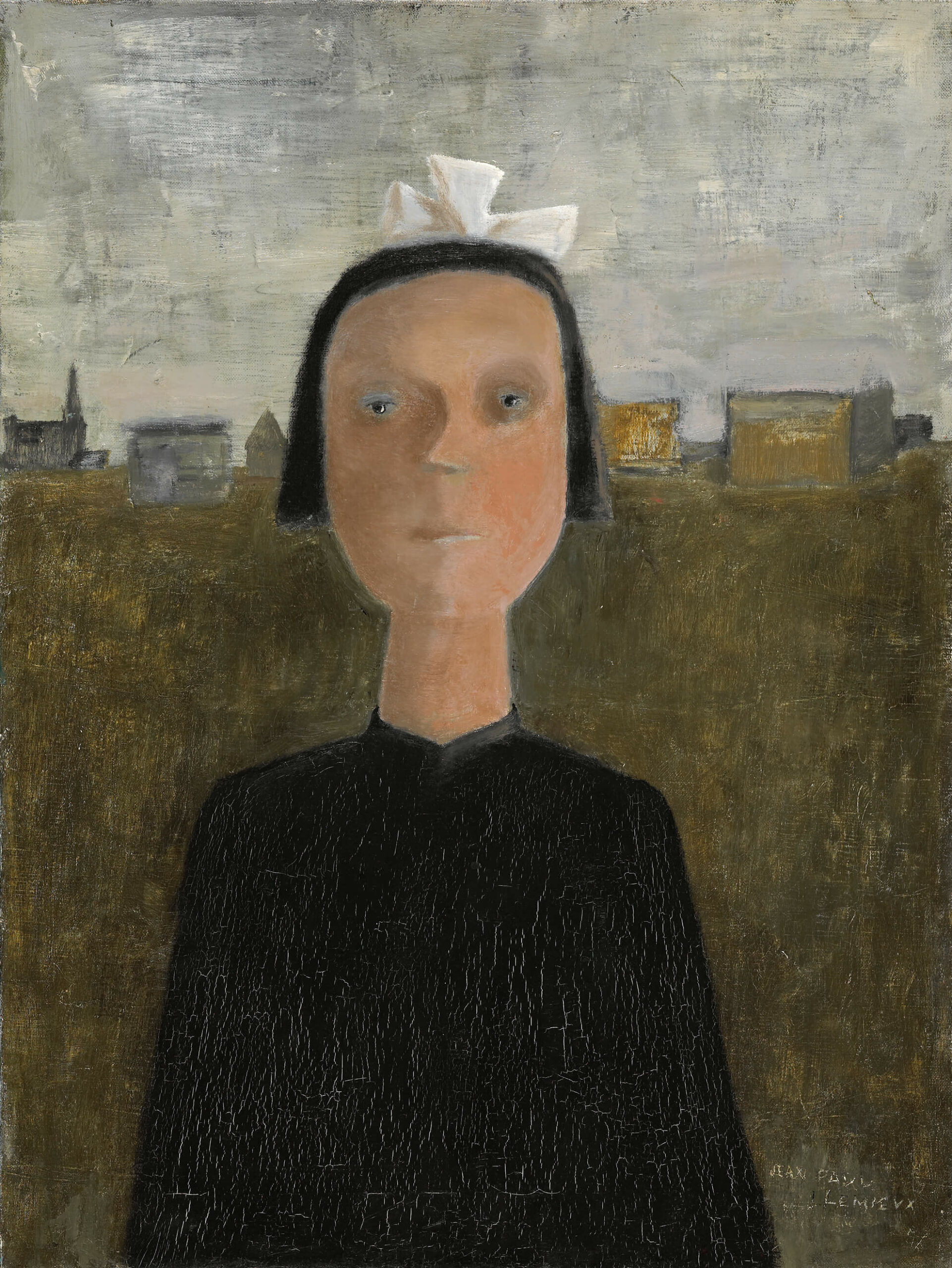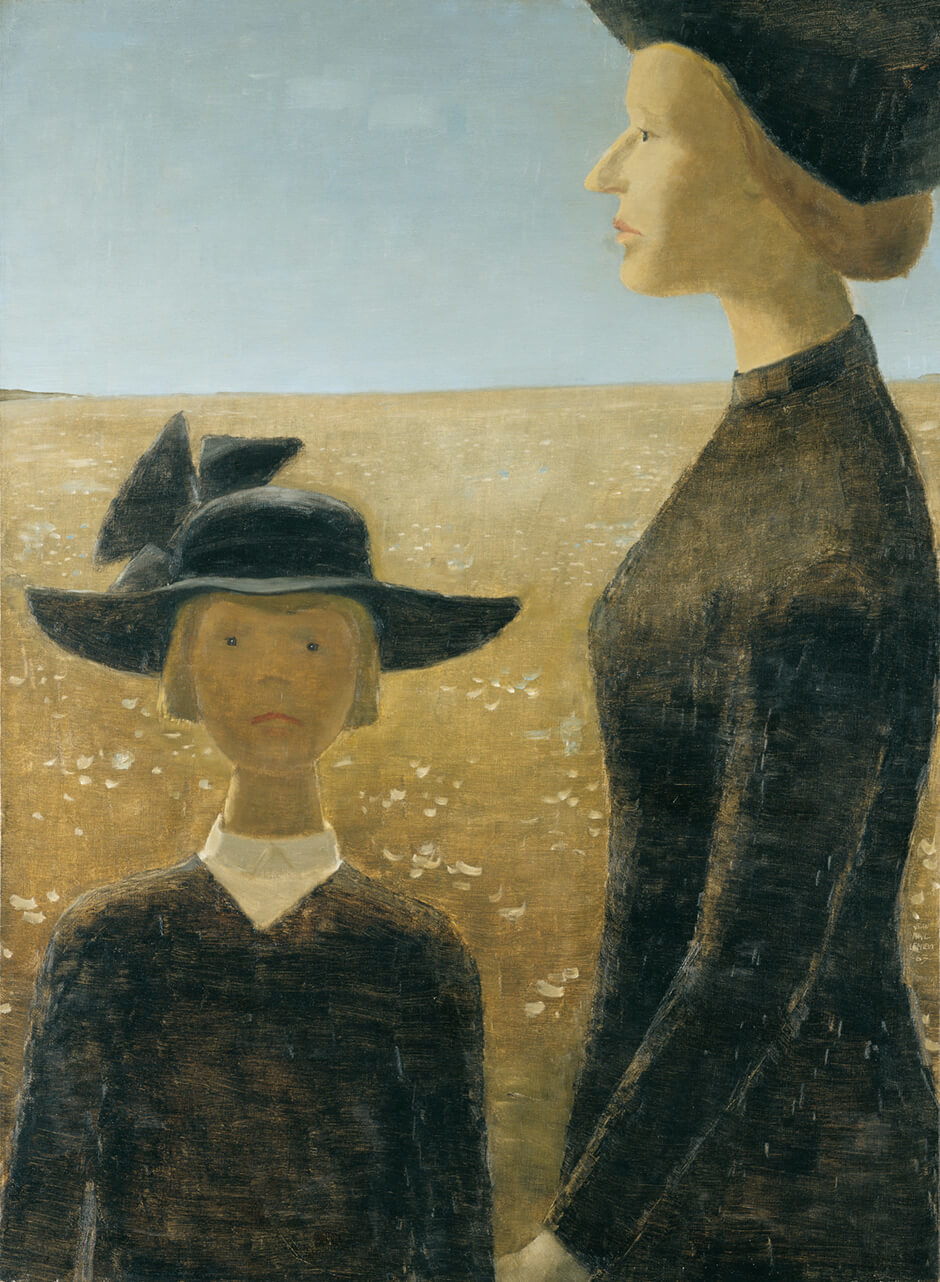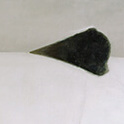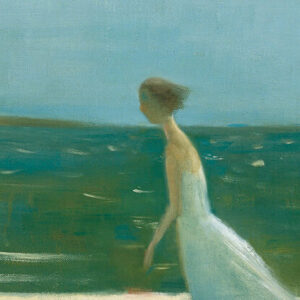The Orphan 1956

Jean Paul Lemieux, The Orphan (L’orpheline), 1956
Oil on canvas, 60.9 x 45.6 cm
National Gallery of Canada, Ottawa

In the art of Jean Paul Lemieux the technical vocabulary is perfectly matched with the emotional content of the image. To convey the distress and loneliness of the orphan child, Lemieux places her in the centre of the picture, shifted slightly to the left; behind her is a field, demarcated by a church and a few buildings, indicating an isolated village. Her head, set on a thin, cylindrical neck, emerges from the black garment that envelops her. All superfluous features are eliminated in the painting of her face. Only the eyes, the nose, and the mouth are left. The simplified rendering extends to the hair and clothing: a white bow placed on top of her meagre, dark coiffure is the sole ornament in the composition.
The Orphan is a remarkable illustration of Lemieux’s concept of painting as, above all, a flat plane on which he maximizes the expressiveness of an image while minimizing the forms and colours. The child gazes out at the viewer, her eyes hollow, tear-stained, and shadowed with dull grey circles; her expression is strikingly sad and very moving. Her arresting image establishes, between the spectator and the orphan, a unique exchange that touches on the human condition. Lemieux’s paintings excel at creating this kind of rich human contact.
Some years later Lemieux returned to a child’s tragedy in a new composition, Death on a Clear Morning (La mort par un clair matin), 1963. This time the little girl is with her mother. Although they are together the bereaved pair are lonely, imprisoned in their heavy black clothing and the private emotions that overwhelm them. The Orphan is a portrait of inescapable despair, while Death on a Clear Morning counters the power of death with that of life: the “bright morning” and the light and warmth of the land are echoed in the pastoral backdrop.

 About the Author
About the Author
 More Online Art Books
More Online Art Books
 Acknowledgements
Acknowledgements